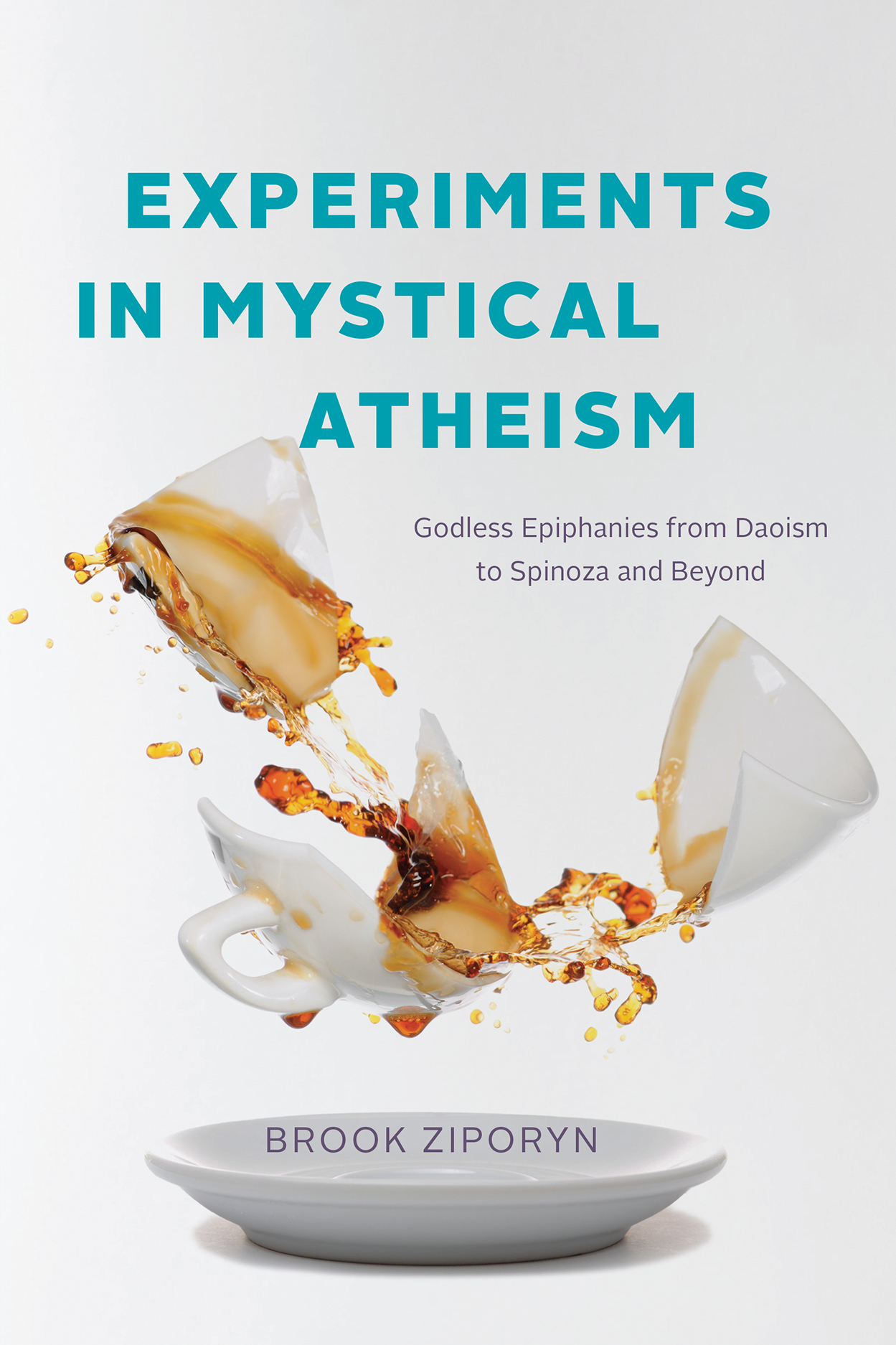Supplementary materials for
Experiments in Mystical Atheism
Godless Epiphanies from Daoism to Spinoza and Beyond
by Brook Ziporyn
To address topics pertinent to the overall argument of the book but too intricate or delicate to be explored unintrusively within its physical confines, the author has added two online appendixes, available here for download as PDFs. Appendix A consists of twelve separate experimental essays of various lengths and depths, which are explicitly mentioned in the main text and endnotes at points where their content is of particular relevance. These are suggested additional readings that provide detailed interpretations of notable themes, thinkers, and religious figures, clarifying in detail how each of them would look in the light of the position developed in the book. An effort is made here to present at least some of the reasoning and evidence behind the portrayals of these topics, which might otherwise strike some readers as gratuitously controversial or contrarian, in the hopes of dispelling both misconstruals of the claims being made and any nagging sense of unaddressed objections and possible counterexamples to those claims. But they are also set off from the main text because they are truly “essays,” in the literal sense of “attempts”: somewhat speculative and tentative discussion-starters, endeavors to provide a voice for a neglected point of view, in the hope of giving it a seat at the table and complexifying a cultural conversation that might otherwise give a false appearance of unproblematic consensus and unanimity.
Online appendix B, “World Without Anaxagoras: Dispelling Superficial Resemblances,” is set apart in a different sense. It is one continuous piece of writing, parallel to Part Two of the book in offering detailed expositions of a number of specific systems of thought, but in this case systems of non-European origin, with particular focus on Chinese traditions, where non-theistic philosophical and religious speculation has historically been especially abundant. The intent is not only to offer a comprehensive account of these systems, but also to zero in on aspects of them that have been susceptible to interpretation in terms that assimilate them to monotheist ways of thinking, and to clarify why this should be deemed seriously misleading and regrettable.
Readers’ comments on this material, and on the book itself, are welcome. So are suggestions for revisions and adjustments to the arguments, indications of neglected evidence pro or con, or possible reservations and qualifications that might improve the conversation. All feedback can be submitted on the author’s website, “Moretoitivities,” where any future revisions or ruminations on these themes, if there are any, will also be posted: https://voices.uchicago.edu/ziporyn/
Online Appendix A
Supplement 1. A Classic Example of a Misfiring Atheist Argument from the Film Inherit the Wind
Supplement 2. Monotheist Religious Innovation as Backfiring Detheology
Supplement 3. What's in It for Them? The Backfiring Structure on the Consumer Side
Supplement 4. Limitations of Teleological Unity
Supplement 5. Aristotle's Halfway House: Out of the Frying Pan and into the Fire
Supplement 6. The Atheist Matrix of Polytheism
Supplement 7. Why So Hard on Love Incarnate?
Supplement 8. Monotheist Negative Theology, and Why It Doesn't Help Much
Supplement 9. Durkheim, Bataille, and Girard on Violence, Sacrifice, and the Sacred
Supplement 10. By-Products of God: Autonomy, Revolution, Nothingness, Finitude
Supplement 11. Europe's Missed Exit to Atheist Mysticism: Spinoza Introduced by Schelling to Kant in the Mind of Hegel (1801)
Supplement 12. Spinoza or Hegel. The Inclusive and the Exclusive Oneness Redux
Online Appendix B
Online Appendix B. World Without Anaxagoras: Dispelling Superficial Resemblances
Contents
1. Confucianism and the Interpersonal Universe: Humanity beyond Personhood
2. Buddhism as Ultra-Atheism
3. Karma versus God as Animistic Atavisms
4. Mahāyāna Bodhisattvas as Promethean Countergods, Whether Real or Unreal
5. Being Born on Purpose in an Atheist Universe
6. Tiantai on Bodhisattvas: Fully Real, Fully Unreal
7. Just This Is Divinity: There Are Gods but There Is No God
8. Intersubsumption of Purpose and Purposelessness, Theist and Atheist Versions: Hegel and Tiantai
9. Universal Mind in Early "Southern" Zen: Another Opposite of God
10. The Lotus Sutra: Monotheism Buddhified; That Is, Destroyed
11. An Alternate Atheist Faith: Amida Buddha and the Pure Land
12. Back to Ground Zero with the Nihilist Virtuoso: Chumming with and Dissolving the Creator in Zhuangzi's Perspectival Mirror
